Why we travel to Singapore for food
People travel for endless reasons: for adventure, for sensory thrills, for love.
Some hit the road to de-stress, to discover, to forget. They’re escaping or seeking, starting a story or ending one. I go on random trips for all these reasons; one of them being to discover good eats.
And that is why I keep coming back to Singapore. It’s a place where you never run out of delicious dishes to try.
Filipinos share such a special bond with Singapore because the city also takes a lot of pride and passion in its food.
An aspirational destination
Touted as an “aspirational destination,” Singapore (SG) lets you be who or what you want to be.
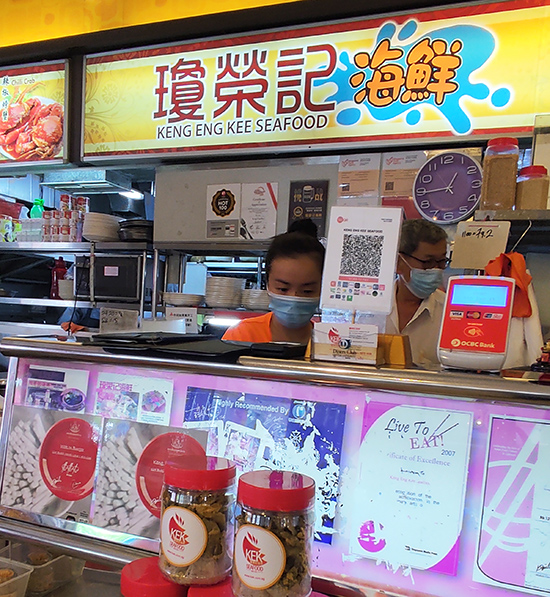
If you love fashion and the arts, be in the thick of the action. Talk to people. Be a culture shaper.
If you love food, don’t just come to Singapore to eat; immerse yourself — be a local. And that’s exactly what we (lifestyle writers) did on a recent trip to the Lion City.
Organized by the Singapore Tourism Board, Travel Warehouse Inc. (TWI), and Cebu Pacific, the fam tour’s eat-inerary let us explore the “Little Red Dot’s” culinary heritage.
Our trip, an introduction to both the old and the new, included a lot of gallivanting from resto to resto.
Of Kuehs and Peranakan dishes
Prior to departure, we were informed that, as per SG protocols, the maximum number of people per group that could move around was 10. And so, participants were divided into two groups: Lifestyle and Food.
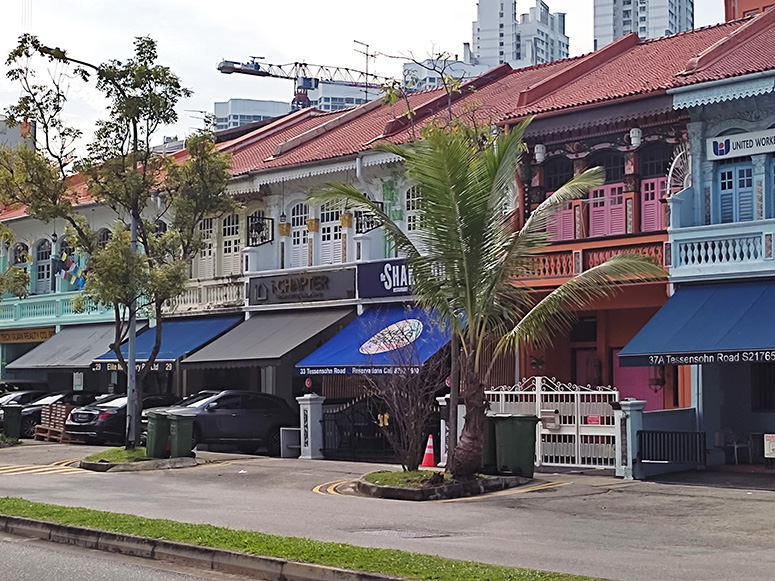
“You should refrain from talking to people on the other table when dining,” warns Carla Rabanzo, manager, STB Philippines. “Otherwise, the dining establishment will be penalized. There are mystery diners around who report directly to the Ministry.”
We arrived at Changi International Airport on the day the Ministry of Health announced that all vaccinated travelers arriving would no longer be required to take a pre-departure COVID-19 test.
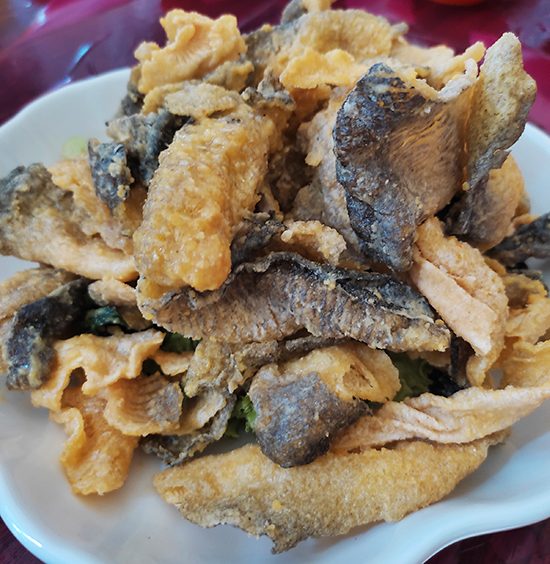
Thank goodness the dining restrictions have also been lifted. If not, Keng Eng Kee Seafood would be in deep trouble. Because as soon as we got to the local Chinese eatery, almost everyone made a mad dash to the takeout counter to get tubs of the Salted Egg Fish Skin to bring back home.
I didn’t join the queue. But I regretted it as soon as I took a bite of the straight-from-the-pan crispy fish skin. The chips were evenly coated with salted egg with a touch of mild heat. The fish skin wasn’t too thick, so it was a delight to munch on.
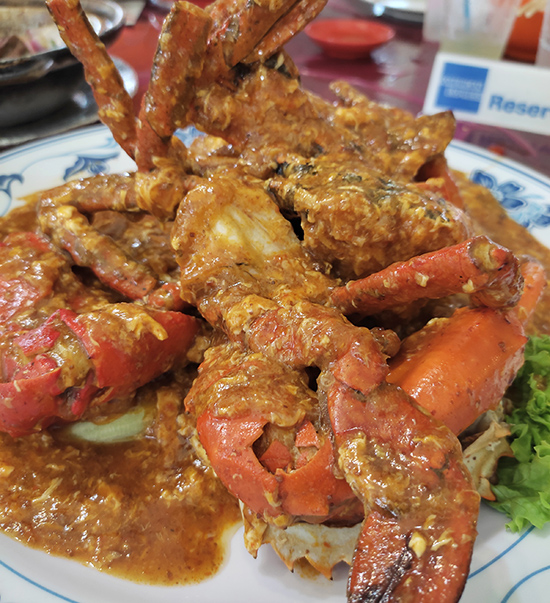
The mains consisted of equally delish salted egg crabs, Singaporean chili crabs, wok-tossed Moonlight Horfun, and coffee pork ribs.
Located at Bukit Merah, Ken Eng Kee Seafood, which was awarded the Michelin Plate from 2016 to 2018, is recognized in the 2017 Top 50 World Street Food Masters and the 2018 Ctrip Gourmet List Destination.
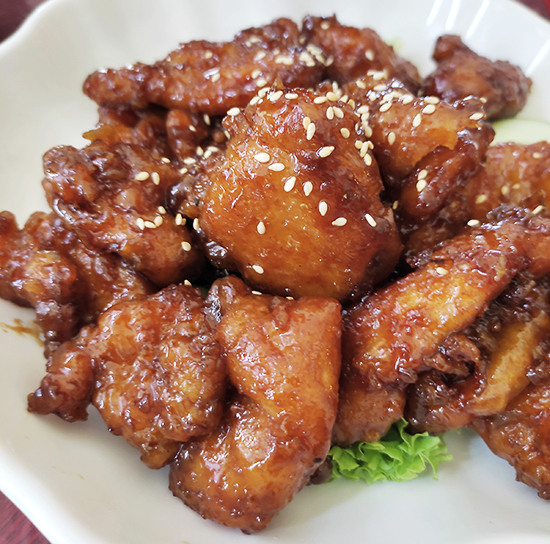
At the Kitchen Society, we learned how to make kuehs, those bite-sized snacks typically made of rice flour. They can be sweet or savory; come in interesting colors and shapes, but are always a delight to nibble on.
Owned and operated by Christopher Tan, author of bestselling cookbook The Way of Kueh, The Kitchen Society is an intimate culinary studio where Tan holds master classes and workshops.
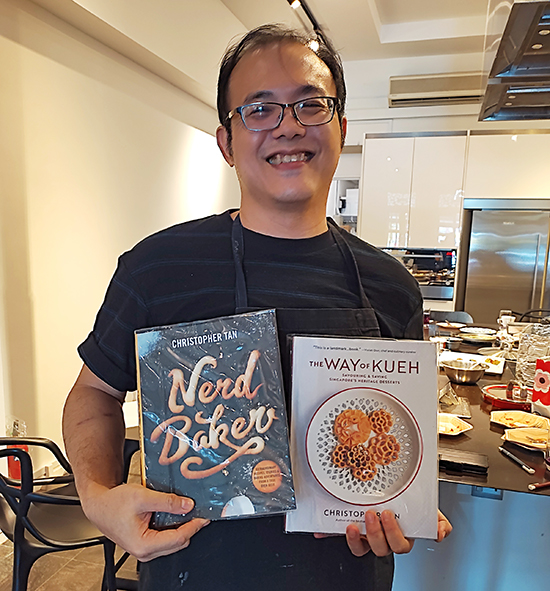
Tracing his roots to Fujianese ancestors, Tan regaled us with stories of his childhood, his interesting neighbors, and why he decided to build his whole life around food, while teaching us how to prepare the Hainanese yi bua and kueh cara manis from scratch using molds he inherited from his mom and grandma.

The culinary studio was filled with the intoxicating aroma of coconut, ginger and pandan, the three main ingredients of the pillowy-soft kuehs.
For dinner, our hosts took us to a Michelin Guide-listed Peranakan restaurant on Armenian Street, just beside the Peranakan Museum.
More than just a restaurant, True Blue Cuisine gives diners a glimpse of the rich Peranakan culture. All five senses come into play as soon as one enters its intricately designed doors.
The potpourri scent of shredded pandan leaves wafted in the air as we inched our way to the main dining area, which is adorned by treasures and memorabilia. Displayed in ornate mahogany cabinets are blue-and-while porcelain plates, antique vases, and mortars and pestles. The walls are decked with old photos and framed beaded slippers.
The food is a different story. Normally I’m not a fan of Peranakan/Nyonya cuisine, which blends Malaysian spices like ginger, lemongrass, galangal and fresh chili paste with Chinese ingredients and techniques. The strong flavors and aroma of spices overwhelm me.

But surprisingly, I enjoyed the Peranakan feast at True Blue Cuisine. It had me at heh gerng lor bak, chicken and prawn meat in bean-curd skin, rendang sapi (beef rendang), and the ayam buah keluak, a chicken stew that is packed with flavor and best enjoyed when slathered with the creamy, black nut.
Now I can’t wait to go back to True Blue Cuisine even for just a tiny slice of that bean-curd delight.
One kind house
For me, the highlight of the trip was the delicious, home-cooked Peranakan lunch at One Kind House, the private home of Singapore’s cooking diva, Mummy Soh, her son Calvin and his wife Arlette and two children Dylan and Ava.

One Kind House is a two-story edifice open to anyone interested in cooking, arts and design, and those with entrepreneurial spirit.
Lording it over the kitchen is 79-year-old Mummy Soh and her two Pinay assistants.
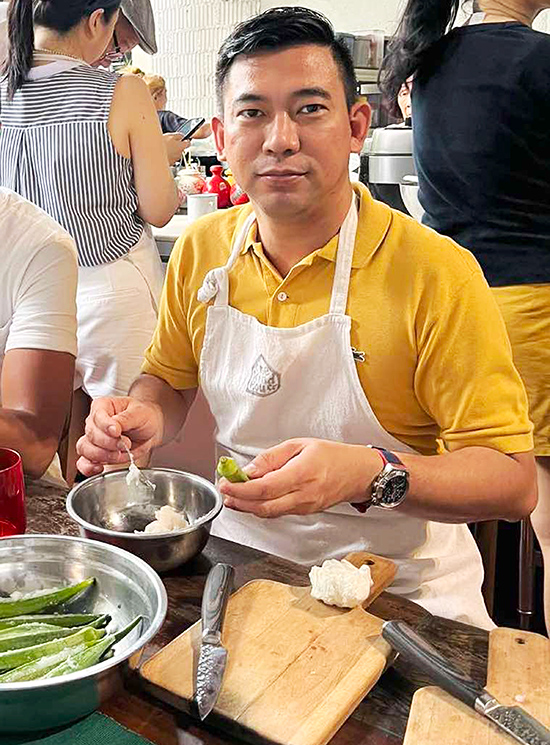
Mummy Soh hosts lunches and dinners, and conducts cooking classes in this simple, typical Singaporean house with a lush garden abloom with blue peas, mulberries, lemongrass, chili, even garlic flower, which can be used to add flavor to your toasts and as a salad garnish.
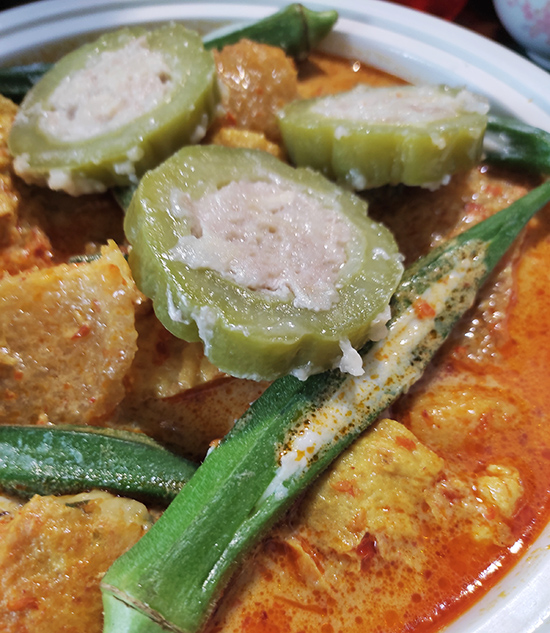
After the house tour conducted by Calvin, we went straight to Mummy Soh’s kitchen, where she asked some of us to wash the rice, extract coconut milk, and prep the okra. Almost everything was prepared from scratch.
We feasted on blue pea rice cooked in coconut, fried okra with white fish filling, mixed veggies, and the Wagyu rendang, which melts in the mouth.
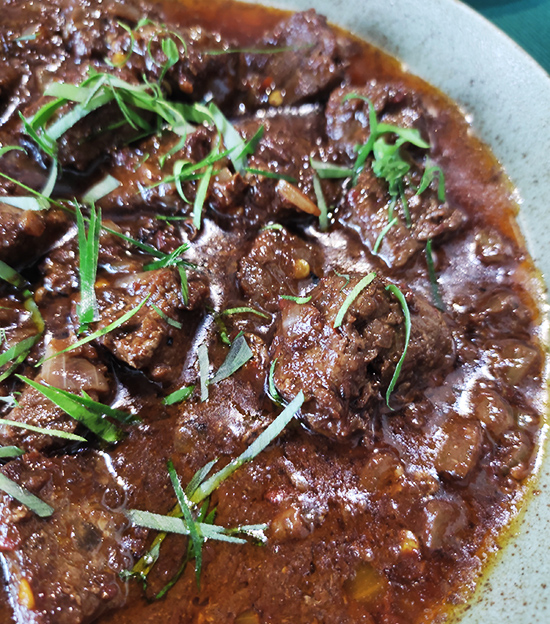
At 79, Mummy Soh cooks, dances, drives, and still drinks.
“When you visit her again, a bottle of Don Papa will make her so happy,” says Calvin.
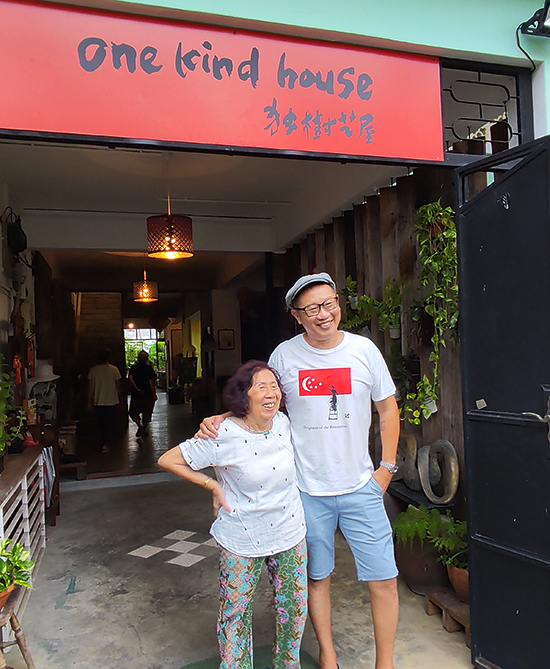
Mummy Soh is about to embark on a European cooking journey, collaborating with an abuela in Spain and a nonna in Italy.
More than just the restaurants we visited, and the good food we indulged in, this trip also showcased the Little Red Dot’s most treasured resource but usually overlooked feature: people.
Singapore, indeed, has many good places to visit, restaurants to try, and passionate individuals to meet.


